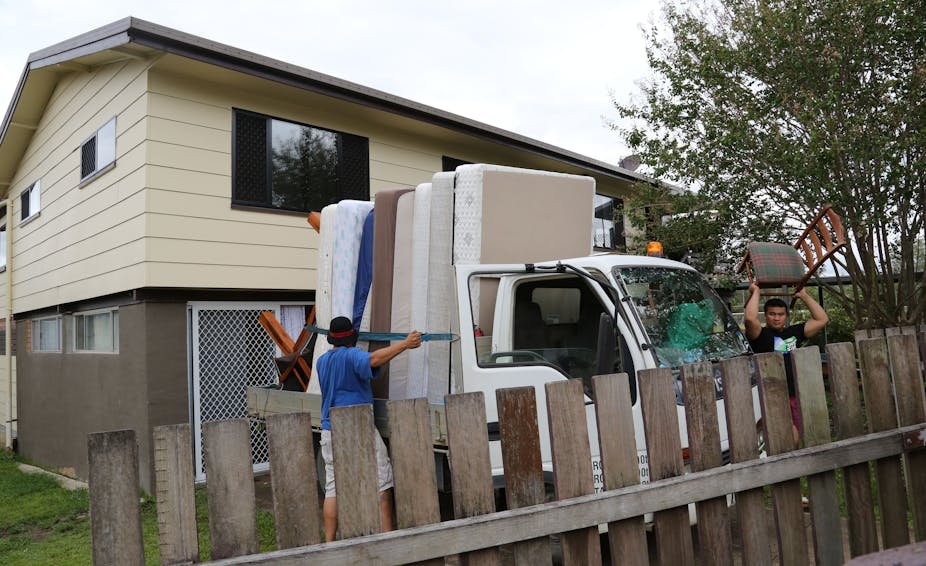Queensland towns and suburbs have been hit by floods again. Flooding is not a rare event here and most residents are not surprised by the recurrence of floods.
But the memory of the 2011 floods is still fresh. Inevitably some homes will be damaged by the floodwaters. Some enduring problems regarding flood insurance threaten to explode as homeowners come back to clean up the mess.
When it comes to property damage, some of these affected households will eventually find that insurance companies are not going to recover their economic losses. Some are not even offered flood cover, whereas some policyholders elected to opt-out. Non-insurance or under-insurance remains an issue.
Why are they left uninsured? Because of their location, risk awareness, or economic reasons? Or ultimately all come down to some kind of policy failures?
After the 2011 Queensland floods, the Federal Government looked into the issue and commissioned the Natural Disaster Insurance Review (NDIR). They have identified a range of supply-side problems to fix. Some of these pertain to the practice of the insurance industry, and some entail legislative efforts.
Quite reasonably, the Review does not recommend mandatory purchase of insurance. Thus, on the demand side, households are left to exercise their freedom of choice. It is up to them if they elect to bear the risks.
But some households really never sign up to a flood insurance package, even if it is available at affordable costs, and even if they knowingly stay in a flood-prone site.
Isn’t it true that people would opt to get insured if they know they are at risk and can afford it? This is our standard assumption – people say no (or under-insure) if they think the floods won’t affect them or the insurance premiums too expensive, and vice versa. The NDIR and the industry share this view.
This is only part of the picture. Research shows that non-insurance is related to factors other than perceived risk and affordability.
In a research project funded by Griffith University, about 500 residents of South East Queensland, including Brisbane, were telephone-interviewed in 2012. They were asked if they have flood cover on current policies. More than 40% of respondents did not have it, or did not have home insurance at all.

True, those respondents who know their homes are at high risk of flooding are more likely to have flood cover on current policies. Also, those who had experienced property damage in the 2011 severe flooding event tend to have such cover. However, this is not a strong positive relationship. Statistically, it is not conclusive to suggest that perceived risk and damage experience explain the tendency for non-insurance.
Likewise, those who have higher incomes and find flood insurance affordable to them tend to insure. But no strong statistical relationship is observed. Household income and affordability are not a good explanation either. The standard assumption does not always hold.
What is the motive then?
Social influences. The findings suggest that if the respondents believe that their family or friends would want them to insure, they tend to do so. Also if they believe that other people like them would buy flood cover, they tend to follow suit. The decision is predominantly socially motivated.
Interestingly, such social factors are precisely what the Productivity Commission has identified but recommended not to deal with through government policy.
Certainly there is something the market cannot do, for which the government should at least facilitate. Although it might not be appropriate for them to mobilise social influence directly, they should try to make sure the community has the capacity to spread the message. There is no excuse for the government to avoid addressing behavioural drivers. Governments have been using all sort of measures to encourage good behaviours and punish the bad ones.
Local community organisations may help increase the voluntary adoption of flood insurance through word-of-mouth. Governments and the industry should support (financially) their efforts and harness the social forces they help to create.
(*Findings will be reported in an article due to publish in the March edition of Area journal.)

